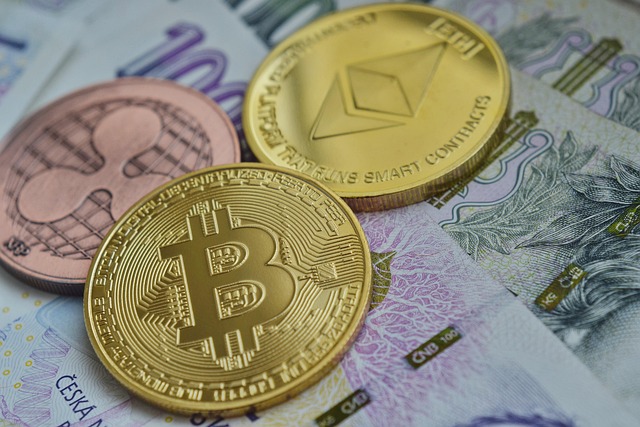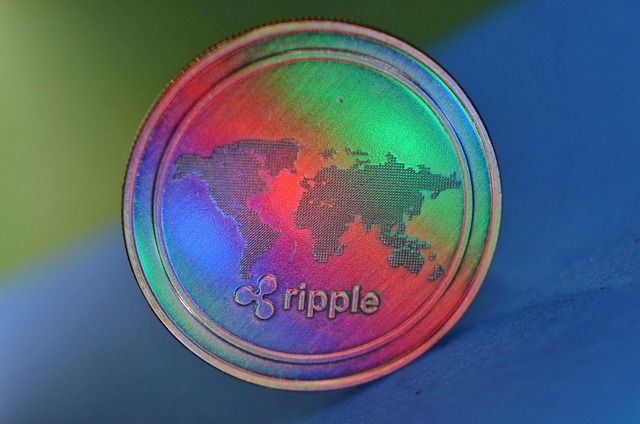XRP Ripple Transaction Time in 2025: An In-Depth Analysis
Author: Jameson Richman Expert
Published On: 2025-08-24
Prepared by Jameson Richman and our team of experts with over a decade of experience in cryptocurrency and digital asset analysis. Learn more about us.
Understanding the XRP ripple transaction time is fundamental for traders, investors, financial institutions, and payment service providers aiming to leverage blockchain technology’s efficiencies. As we advance into 2025, transaction speed remains one of the most critical performance metrics, directly influencing user experience, operational costs, and competitive positioning within the rapidly evolving digital asset ecosystem. My exploration into the Ripple environment has revealed that beyond its technological blueprint, real-world factors—such as network congestion, validator node performance, infrastructure robustness, and regulatory frameworks—significantly shape actual transaction times. When I first examined XRP, I was captivated by its promise of near-instant settlement—a revolutionary feature challenging the slower confirmation times of Bitcoin and Ethereum. This comprehensive analysis delves into the many elements influencing XRP’s transaction speed in 2025, providing insights into its underlying technology, current challenges, future potential, and strategic implications, enriched with detailed context and in-depth understanding.

Evolution of XRP Transaction Time: A Historical Perspective
Historically, XRP’s transaction times have set a benchmark for blockchain speed, especially when contrasted with legacy systems and other cryptocurrencies. Since its inception, XRP was designed to facilitate fast, cost-efficient cross-border payments. Early on, the network showcased capabilities of confirming transactions in roughly 3-4 seconds, a significant leap over Bitcoin’s average of 10 minutes and Ethereum’s 15 seconds under typical conditions. Over the years, ongoing protocol upgrades, increased validator decentralization, and infrastructural improvements have further refined these times. By 2025, XRP is poised to sustain and enhance these performance levels, often achieving sub-3 second confirmation times, which are critical for its role in real-time financial services and instant settlement applications.
Understanding XRP’s Transaction Speed: Core Mechanics
At the heart of XRP’s remarkable speed lies its unique consensus mechanism—the XRP Ledger Consensus Protocol (XRP LCP). This consensus model is fundamentally different from proof-of-work (PoW) or proof-of-stake (PoS) systems. Instead, XRP employs a federated consensus approach where a curated set of trusted validator nodes iteratively agree on the validity of transactions. This process involves several key features:
- Validator Selection: Validators are chosen based on their reputation, performance, and adherence to network rules, ensuring high trustworthiness and reliability.
- Consensus Rounds: Validation occurs in rounds, with each round involving a subset of validators reaching agreement that a transaction is valid.
- Synchronization: The protocol incorporates a consensus clock that synchronizes validation activities, minimizing delays caused by network latency.
This approach allows the XRP Ledger to process around 1,500 transactions per second (TPS), far surpassing Bitcoin’s 7 TPS and Ethereum’s approximately 30 TPS (pre-2.0). The protocol’s efficiency stems from its ability to reach agreement rapidly without energy-intensive mining, making it ideal for high-volume, low-latency applications like real-time settlements and cross-border remittances.
Factors Influencing Ripple Transaction Time in 2025
While XRP’s protocol is engineered for speed, real-world transaction times are affected by several dynamic factors:
1. Network Congestion and Load Conditions
During periods of high demand—such as global financial market surges or large institutional transactions—network load can temporarily influence confirmation times. Although XRP’s protocol is designed to handle peaks gracefully, extreme congestion can lead to minor delays, typically measured in milliseconds to a few seconds.
2. Validator Node Performance and Distribution
The decentralization and geographic distribution of validator nodes significantly impact transaction speed. A highly decentralized validator set, with nodes distributed across various regions and optimized for uptime, ensures rapid consensus even under stress. Conversely, centralized validator clusters or compromised nodes can introduce delays or vulnerabilities.
3. Infrastructure Resilience and Interoperability
Operational robustness of the infrastructure—such as exchange backend systems, wallet services, and enterprise integrations—affects overall transaction latency. Leading exchanges like Binance and MEXC invest heavily in optimized infrastructure, ensuring deposit, withdrawal, and settlement processes are swift and reliable.
4. Protocol Upgrades and Scalability Solutions
Ongoing enhancements—such as Layer 2 scalability solutions, the Interledger Protocol (ILP) for cross-chain interoperability, and consensus protocol improvements—are designed to reduce latency further. These upgrades are critical as the ecosystem expands toward enterprise-scale applications, demanding higher throughput and lower latency.

Real-World Applications Accelerated by Speed in 2025
The rapid transaction capabilities of XRP are transforming global finance, especially through RippleNet, a network adopted by hundreds of financial institutions worldwide. Notable applications include:
- Instant Cross-Border Payments: The ability to settle international remittances in seconds reduces costs and improves cash flow management for businesses and consumers.
- On-Demand Liquidity (ODL): XRP acts as a bridge currency, enabling near-instant currency exchanges without pre-funded nostro accounts, dramatically improving liquidity management.
- DeFi and Tokenization: Fast transaction times facilitate decentralized finance applications, including asset tokenization and instant lending, which rely on rapid settlement.
These technological advantages translate into tangible benefits such as reduced operational costs, increased transactional transparency, and enhanced customer satisfaction. Despite regulatory hurdles in some jurisdictions, XRP’s speed remains a cornerstone in its strategic deployment across sectors.
Comparison with Other Cryptocurrencies
When contrasting XRP’s transaction times with other cryptocurrencies:
- Bitcoin: Confirmations typically take 10 minutes or more, with congestion causing delays of hours or days during high demand.
- Ethereum: Post-2.0 upgrades have improved speeds to around 12 seconds per block, but high network congestion can still cause delays and increased fees.
- Ripple (XRP): Consistently confirms transactions within 3-5 seconds under normal conditions, with some instances achieving sub-3 second confirmation times, making it highly suited for enterprise applications requiring real-time settlement.
Future Outlook: 2025 and Beyond
Looking ahead, the trajectory of XRP’s transaction speed in 2025 is optimistic. Ripple Labs is actively developing enhancements such as:
- Layer 2 Scaling Solutions: To further increase throughput and reduce latency, similar to rollups and state channels in other blockchain ecosystems.
- Decentralization of Validator Nodes: Greater decentralization aims to enhance security and resilience, ensuring consistent high-speed processing.
- Interoperability Protocols: The Interledger Protocol (ILP) is expanding, enabling seamless cross-chain transactions across diverse blockchain networks, which will require rapid validation mechanisms.
Additionally, integration with AI-driven analytics, automation tools, and enterprise-grade security protocols will empower users to optimize transaction timing and operational workflows. Regulatory developments will influence adoption strategies but are unlikely to impede XRP’s fundamental speed advantages.

Conclusion: The Role of XRP in Shaping Future Digital Transactions
In conclusion, XRP’s transaction times have evolved from a technical innovation to a practical advantage by 2025, underpinning a new era of real-time, cost-effective digital payments. Its unique consensus mechanism, combined with ongoing protocol enhancements, positions XRP as a pivotal player in the future of cross-border finance, DeFi, and enterprise digital ecosystems. The journey from initial skepticism to widespread acceptance highlights the importance of technological robustness and strategic innovation.
For traders, institutions, and developers, staying informed about protocol upgrades, regulatory changes, and emerging interoperability solutions will be critical to harnessing XRP’s full potential. As the digital economy accelerates, XRP’s speed—its defining advantage—will continue to drive efficiency, transparency, and financial inclusion on a global scale.
Additional Resources for Strategic Advantage
To maximize your engagement with XRP and the broader crypto market, consider exploring tools such as trading bots and signal services. These tools can provide competitive edges, especially in fast-moving markets like South Africa, where rapid decision-making is vital. For comprehensive guides on crypto signals and automation, visit these resources. Partnering with reputable exchanges—such as Binance, MEXC, Bitget, and Bybit—ensures security, liquidity, and speed, enabling you to capitalize on XRP’s technological advantages effectively. Staying ahead of technological and regulatory trends will allow traders and businesses to navigate the evolving landscape of digital transactions confidently in 2025 and beyond.